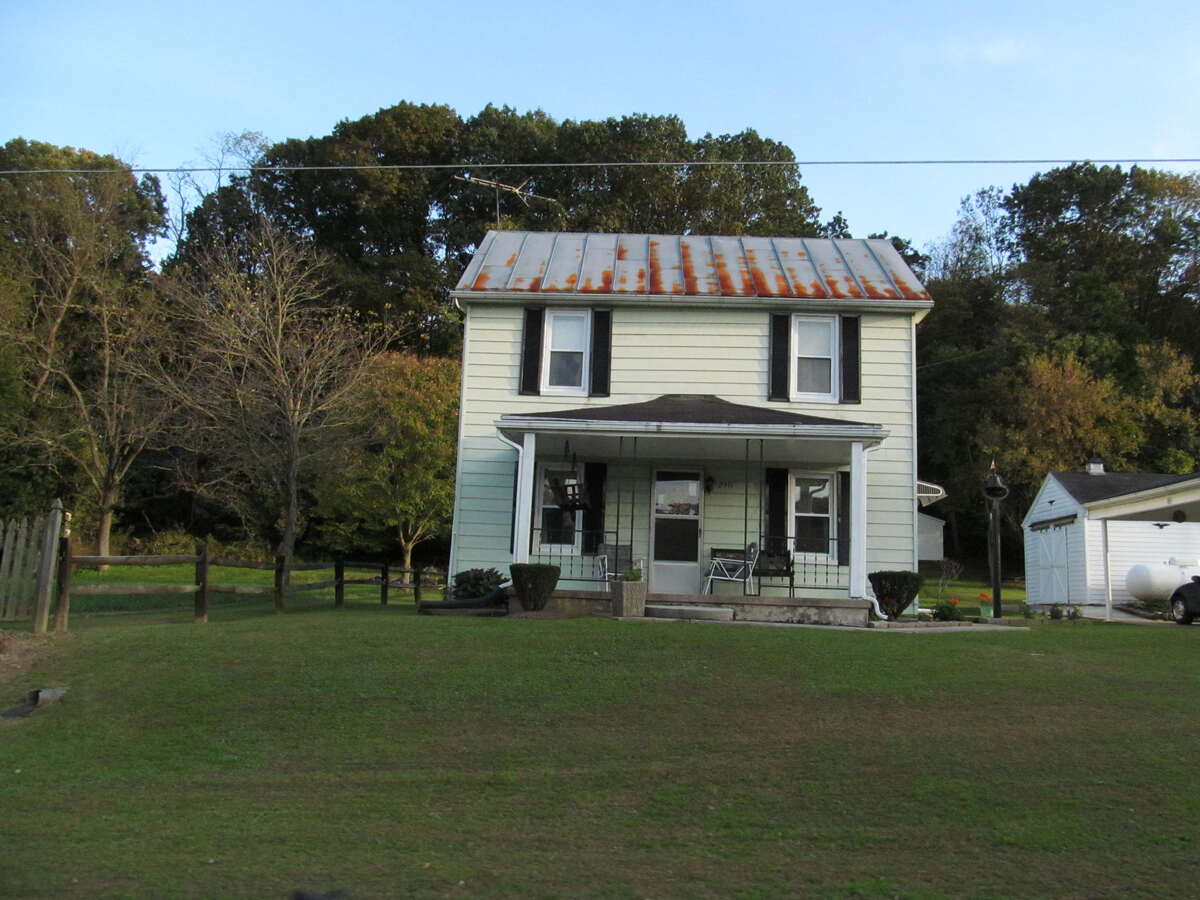
The best grass seed for Maryland lawns includes cool-season varieties like tall fescue, Kentucky bluegrass, and perennial ryegrass and warm-season varieties like Zoysiagrass and Bermudagrass.
Grass gives you a place to run wild, and a vibrant lawn increases your home’s curb appeal. Unfortunately, Maryland’s weather can be wet and sometimes cold, creating challenges for lawn care. And since we are in the transition zone, both cool- and warm-season grasses grow here. In this article, we’ll cover the best grass seeds for your Maryland lawn.
Warm-Season vs. Cool-Season Grasses
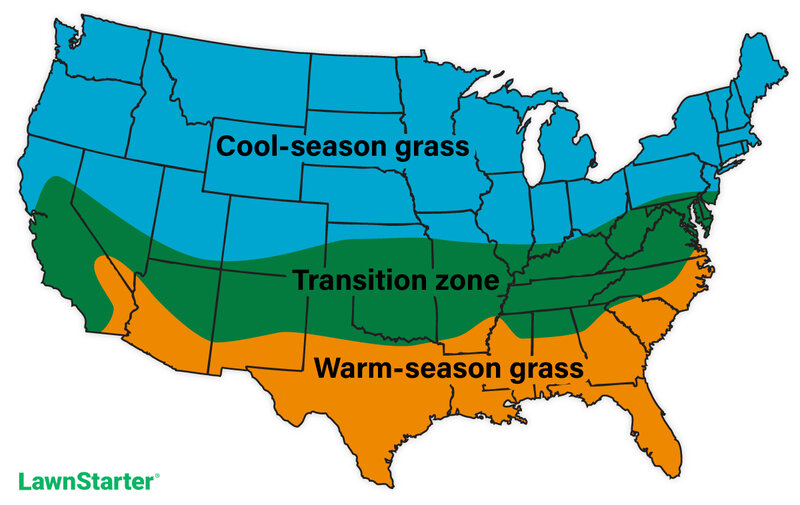
Maryland’s climate supports both cool-season and warm-season grass types. Cool-season grasses grow steadily in the spring and fall. Some cultivars may go dormant, turning brown, in the summer, depending on the temperatures.
On the other hand, warm-season grasses grow most actively in the late spring and summer. They stop growing in the late fall and go dormant through the winter.
Cool-Season Grasses for Maryland
Cool-season varieties prefer temperatures between 60 to 75 degrees Fahrenheit. They grow best in the Appalachian Mountain region in Western Maryland. Popular cultivars include:
Tall Fescue (Festuca arundinacea)

Photo Credit: Aaron J. Patton, Ph.D. / Turfgrass Extension Specialist at Purdue University
Tall fescue is recommended for most Maryland lawns. It is established in one to two weeks and has strong heat, drought, and foot-traffic tolerance. Unfortunately, it can be prone to pests and diseases. It also grows rapidly, so its maintenance needs are high. However, it produces a resilient, dark green lawn that can handle partial shade.
- Classification: Cool-season grass
- Spreads by: Bunch-type grass
- Shade tolerance: Moderate
- Drought resistance: High
- Foot traffic tolerance: High
- Maintenance needs: Grows fast, so plan to mow quite a bit.
- Mowing height: 2-4 inches
- Potential for disease and pests: Moderate to high
- Soil pH: 5.5-6.5
- Soil type: Well-draining and fertile but will tolerate a wider range of soil conditions
Other notes: Reseed every few years to repair bare spots and thinning.
Grass Seed Options:
– Triple-Play Tall Fescue Grass Seed Blend (5000 sq ft)
– Eretz Kentucky 31 K31 Tall Fescue Grass Seed (choose your size)
– Pennington The Rebels Tall Fescue Grass Seed Mix (7 lb.)
Kentucky Bluegrass (Poa Pratensis)

Photo Credit: Shutterstock
Kentucky bluegrass is a high-maintenance grass. It needs regular watering and is susceptible to diseases. It also requires full sun to grow densely. However, many homeowners consider it worth growing. It produces a dense, soft lawn in a unique emerald green color that will be the envy of the neighborhood.
- Classification: Cool-season grass
- Spreads by: Rhizomes
- Shade tolerance: Low to moderate — prefers full sun
- Drought resistance: Moderate, but will survive by going dormant
- Foot traffic tolerance: Low to moderate, but recuperates well
- Maintenance needs: Moderate mowing frequency; a high-maintenance grass
- Mowing height: 2-3 inches
- Potential for disease: Moderate to high
- Soil pH: 6-7
- Soil type: Good drainage, fertile
Other notes: Under ideal conditions, it produces a dense lawn. Many of its traits vary widely by cultivar, with newer cultivars generally being hardier and more disease-resistant. It’s most often mixed with other species, such as tall fescue, in home lawns.
Grass Seed Options:
– Jonathan Green (11970) Blue Panther Kentucky Bluegrass Grass Seed (3 lbs.)
– SeedRanch Midnight Kentucky Bluegrass Seed (5 lbs.)
– Jacklin Seed – Biltmore Blue Blend – 100% Kentucky Bluegrass (5 lbs.)
Perennial Ryegrass (Lolium perenne)
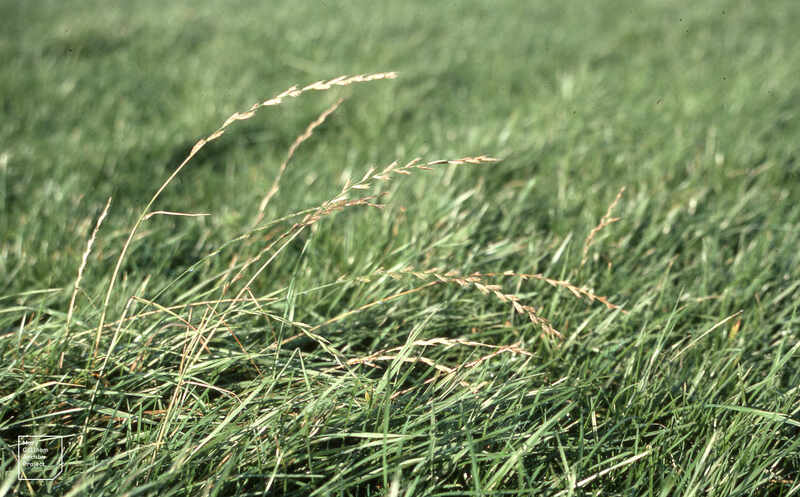
Photo Credit: Dr Mary Gillham Archive Project / Flickr / CC BY 2.0
Perennial Ryegrass is worth growing if you have a sunny lawn, as it thrives in full sun. Because it’s susceptible to diseases, it is commonly used in seed mixtures with Kentucky bluegrass or fine fescue.
This fast-growing turfgrass germinates rapidly, making it a great choice for fall overseeding or fast lawn repairs. It also recovers quickly from damage.
- Classification: Cool-season grass
- Spreads by: Bunch-type grass
- Shade tolerance: Low — prefers full sun
- Drought resistance: Low (summer dormancy in some areas)
- Foot traffic tolerance: High, but has poor recuperative ability
- Maintenance needs: Moderate mowing requirement, depending on cutting height (lower cutting heights require more frequent mowing)
- Mowing height: 2-3 inches
- Potential for disease and pests: Moderate to high
- Soil pH: 5.5-7.5
- Soil type: Well-draining, highly fertile
Other notes: Most often mixed with Kentucky bluegrass and fine fescue in a cool-season mix.
Grass Seed Options:
– Outsidepride Perennial Ryegrass Seed (5 lbs.)
– Eretz ProTurf Perennial Ryegrass Fine Lawn Seed (choose your size)
Fine Fescue (Festuca arundinacea)
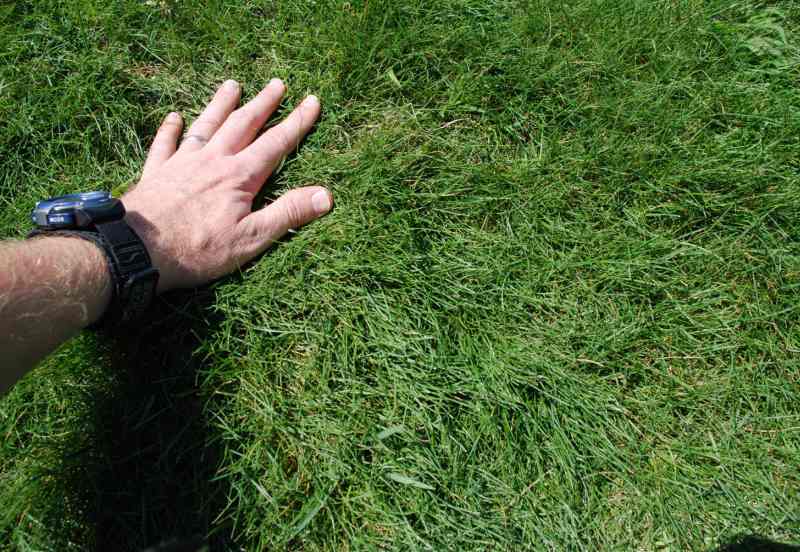
Photo Credit: Aaron J. Patton, Ph.D. / Turfgrass Extension Specialist at Purdue University
If you have a shady lawn, fine fescue is a great choice because of its high shade tolerance. Additionally, it’s low-maintenance, so it doesn’t need much mowing, watering, or fertilizing. However, it doesn’t tolerate foot traffic well, so if you plan on having kids and pets run wild on your lawn, this isn’t the right grass for you.
- Classification: Cool-season grass
- Spreads by: Bunch-type grasses with one exception: creeping red fescues possess rhizomes
- Shade tolerance: Moderate to high
- Drought resistance: Moderate to high
- Foot traffic tolerance: Low to moderate
- Maintenance needs: Low mowing frequency
- Mowing height: 1.5-3 inches
- Potential for disease and pests: Moderate to high
- Soil pH: 5.5-6.5
- Soil type: Good drainage is a must; tolerates infertile soils; sandy soils generally work well
Other notes: Often used in a mix with other cool-season grasses, especially in sun/shade mixes.
Grass Seed Options:
– Outsidepride Legacy Fine Fescue Grass Seed (5 lbs.)
– Eretz Creeping Red Fine Fescue Seed (choose your size)
– Outsidepride Creeping Red Fine Fescue Grass Seed (25 lbs.)
– Outsidepride Hard Fine Fescue Grass Seed (10 lbs.)
Warm-Season Grasses for Maryland
Warm-season grasses grow best in temperatures between 80 to 95 degrees Fahrenheit. They fare best in the Piedmont Plateau or Atlantic Coast regions in Southern, Central, and Eastern Maryland. Common varieties include:
Zoysiagrass (Zoysia)
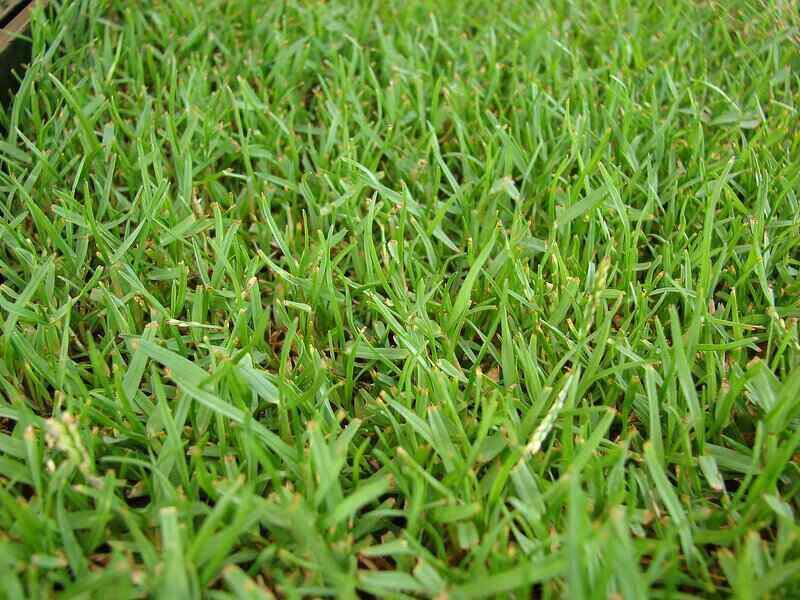
Photo Credit: Forest and Kim Starr / Wikimedia Commons / CC BY 3.0 US
Zoysiagrass is a low-maintenance grass that thrives in full sun. It’s drought-, shade-, traffic-, and disease-tolerant, making it a popular choice for Maryland homeowners. Plus, it only needs one application of fertilizer a year in June. Additionally, it takes two to three years to fully establish, but once it does, it forms a beautiful, cushiony lawn.
- Classification: Warm-season grass
- Spreads by: Stolons and rhizomes
- Shade tolerance: Low to moderate
- Drought tolerance: High – although it needs supplemental watering during dry periods
- Foot traffic tolerance: High
- Maintenance needs: Low to moderate
- Recommended mowing height: 1-2.5 inches
- Potential for disease and pests: Moderate (common diseases include fairy rings, dollar spot, brown patch, powdery mildew, pythium blight, rust, large patch, spring dead spot, leaf spot, root decline, chinch bugs, Zoysiagrass mites, and mole crickets)
- Soil pH: 6-6.5
- Soil type: Grows in most soil types but prefers well-drained soils
Other notes: Homeowners who love hosting BBQ parties in their yards prefer this grass variety because of its foot traffic tolerance.
Grass Plug and Seed Options:
– Zoysia Plugs (50 Large Grass Plugs)
– Zoysia Plugs (50 Full & Lush Grass Plugs)
– Zoysia Plugs (100 Plugs)
– Zoysia Emerald Grass Seeds (1/8 lb. of seeds)
– Zenith Zenith Grass Seeds (1/8 lb. of seeds)
Bermudagrass (Cynodon dactylon)
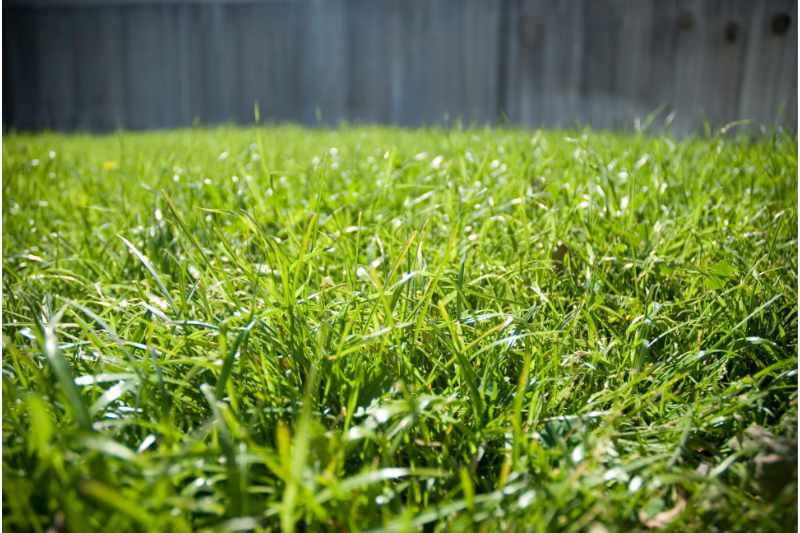
Photo Credit: CDH_Design / Canva Pro / License
Bermudagrass is a high-maintenance grass, but it is incredibly resilient. It loves the sun and high temperatures. It is also drought-tolerant and fast-growing. Unfortunately, bermudagrass requires frequent mowing (every 5 days) during the growing season, but it recovers quickly from damage.
- Classification: Warm-season grass
- Spreads by: Stolons and rhizomes
- Shade tolerance: Low – some varieties need more sun than others
- Drought tolerance: High – may go dormant during long periods of drought
- Foot traffic tolerance: High
- Maintenance needs: Moderate to high – requires frequent watering, fertilization, and mowing to maintain its appearance and health
- Recommended mowing height: 1-2 inches – raise the mower height during periods of drought or extreme heat
- Potential for disease and pests: Moderate (common diseases include dollar spot, large patch, leaf spot, and spring dead spot; can be prone to armyworms, bermudagrass mites, and nematodes)
- Soil pH: 6-6.5
- Soil type: Grows in most soil types
Other notes: It has the impressive ability to propagate itself rapidly, but this may result in the grass taking over and invading nearby flower beds or other cultivated areas.
Grass Seed Options:
– Pennington Bermudagrass Bare Spot (5 lb. bag)
– Pennington Smart Seed Bermudagrass Mix (8.75-lb. bag)
– Scotts Turf Builder Bermudagrass (10-lb. bag)
– Hancock Seed Co. Bermudagrass (50-lb. bag)
St. Augustinegrass (Stenotaphrum secundatum)
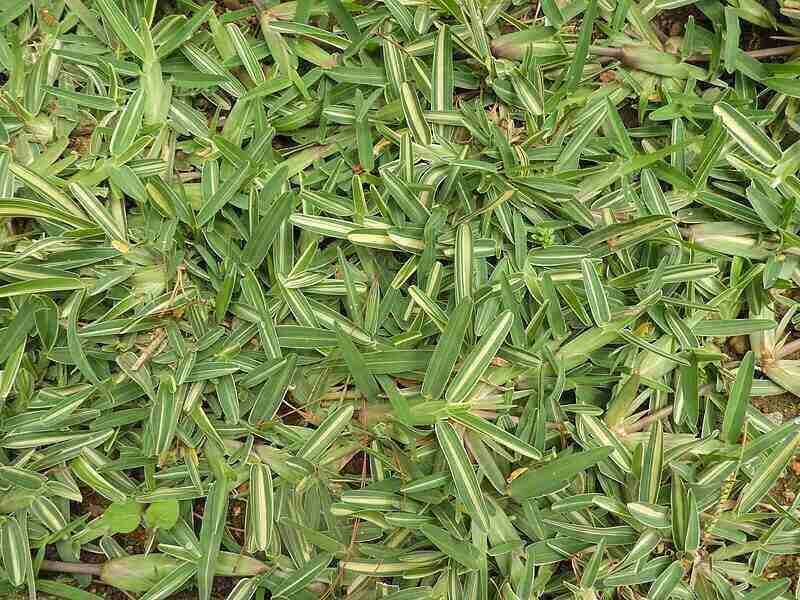
Photo Credit: Yercaud-elango / Wikimedia Commons / CC BY-SA 4.0
St. Augustinegrass is a great choice if you live on the Eastern shore, as you can plant it in sandy soils and it has a high salt tolerance. However, it doesn’t tolerate heavy foot traffic and can be susceptible to insects and diseases. It requires some TLC to keep its blue-green color and coarse, spongy texture. It is also only available as sod, making repairs costly.
- Classification: Warm-season grass
- Spreads by: Stolons
- Shade tolerance: Moderate shade tolerance, among the highest of any warm-season grass; some cultivars are more shade tolerant than others
- Drought resistance: Moderate
- Foot traffic tolerance: Moderate
- Maintenance needs: Moderate to high mowing frequency
- Mowing height: 2.5-4 inches (mow dwarf varieties from 2.5-3 inches; standard cultivars from 3-4 inches; mow tall in shade)
- Potential for disease: Low to moderate — gray leaf spot and large patch are common
- Potential for pests: Low resistance
- Soil pH: 6-7.5
- Soil type: Tolerates many soil types but prefers moderately fertile and moist (not waterlogged) soils; doesn’t tolerate soil compaction
Other notes: Native to coastal areas, St. Augustinegrass prefers moist soils and mild winters but can thrive in inland areas, provided growing conditions are met. It has good salt tolerance but will go dormant during the winter, except in the Southern regions.
Grass Plug Options:
– Seed Ranch St Augustine Seville Grass Plugs (2 Trays)
– Seed Ranch St Augustine Floratam Grass Plugs (2 Trays)
When to Plant Grass Seed in Maryland
The best time to plant grass seed in Maryland is the early fall. Aim to sow seed between late August and early October to allow your lawn to establish before the winter. Reseeding and overseeding should be part of your overall lawn care plan in Maryland.
How to Choose Grass Seed
There are four factors to consider when choosing the right grass seed for your lawn:
- Maintenance: How much work do you want to put into your lawn?
- Shade: How much shade does your lawn get?
- Drought: Do you have automatic irrigation?
- Foot Traffic: Do you walk on your lawn a lot?
Each grass type has its own needs and preferences, and once you understand your yard and what you plan to use it for, you’ll be able to pick the grass best suited for it.
Maintenance
- High-maintenance: Kentucky Bluegrass, Bermudagrass
- Low-maintenance: Fine Fescue, Tall Fescue, St. Augustinegrass
Shade
- High Shade Tolerance: Fine Fescue, St. Augustinegrass
- Low Shade Tolerance: Perennial Ryegrass, Bermudagrass, Kentucky Bluegrass
Drought
- High Drought Tolerance: Bermudagrass, Zoysiagrass
- Low Drought Tolerance: Perennial Ryegrass, Kentucky Bluegrass
Foot Traffic
- High Foot Traffic Tolerance: Perennial Ryegrass, Bermudagrass, Zoysiagrass
- Low Foot Traffic Tolerance: Fine Fescue, Kentucky Bluegrass, St. Augustinegrass
FAQ
Fine fescue is the easiest grass to grow in Maryland, specifically hard fescue.
Water deeply but infrequently. Aim to provide 1.5 inches of water weekly. The best approach is to water for 20 minutes three times a week.
The most common lawn diseases to watch out for include dollar spot, brown patch, and red thread. Proper watering and lawn maintenance are crucial to prevent lawn diseases.
Hiring a Professional
Maryland’s rainy season and finicky weather make growing grass difficult, but picking the right variety and caring for it can do wonders. However, if you’re not ready to commit to a full lawn care routine or you don’t have the time, LawnStarter can help.
We can connect you with local lawn care pros who can do the dirty work for you.
LawnStarter participates in the Amazon Services LLC Associates Program, an affiliate advertising program. LawnStarter earns revenue from products promoted in this article.
Main Image Credit: Doug Kerr / Flickr / CC BY-SA 2.0